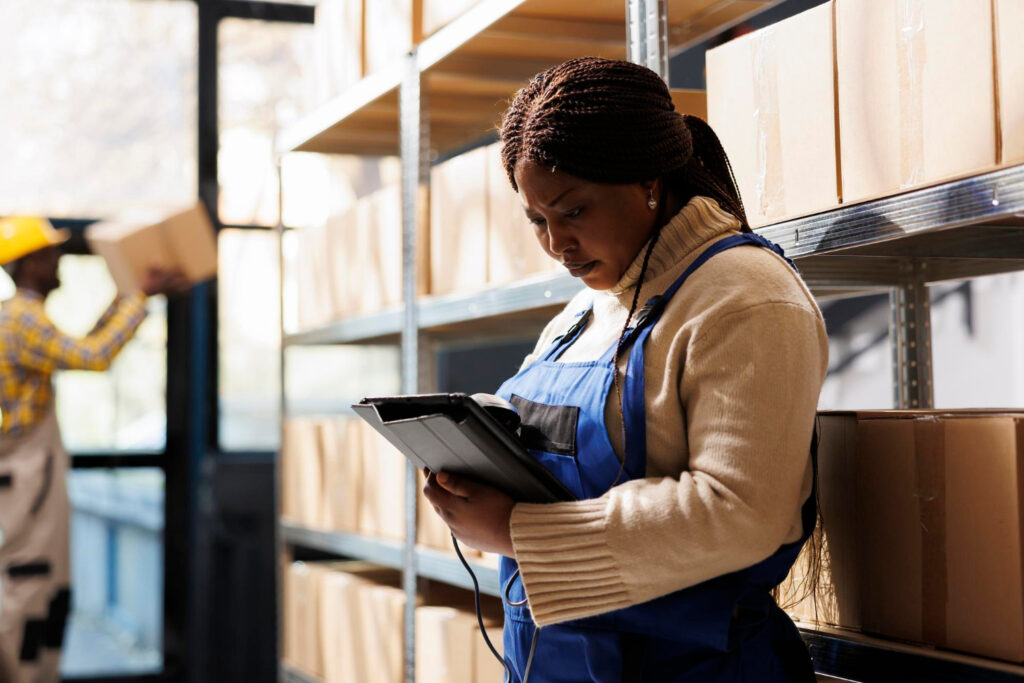Theres no doubt at all that the pandemic has put predicted changes in consumer behaviour into overdrive. Timescales for the adoption of (and reaction to) new spending trends have been accelerated at an unimaginable rate, and growth in ecommerce is conservatively estimated at around 130% year-on-year.
Even the most traditional of operations will admit that this kind of shift change requires a swift and effective response within fulfilment and logistics. Sustained, high-level efficiency is required and thankfully there is a tried and tested solution which can be applied almost immediately to help achieve exactly that.
Truly flexible automation
Collaborative Mobile Robots (CMRs) have come a long way since the days of industrial robots which needed to be caged or isolated in a safety zone, or the automated guided vehicles which could only work on set pathways, totally separated from those used by staff.
Todays models are smaller, much more mobile, able to cope with a wider variety of surfaces and generally autonomous in their operation. This means that they can be put to work in just about any area of a facility and, most importantly, no longer need to be segregated from workers. Essentially, they just get on with it wherever they are needed and complement the activities of their human counterparts.
CMRs can be integrated within existing warehouse management systems in a matter of weeks. This speed of implementation, in conjunction with the on-going flexibility they offer, means that warehouses can respond to peak demands and maintain the high level of agility which is demanded within modern logistics operation.
Efficiency, productivity, job satisfaction and safety are the winners
It may be true that these robots will gradually take on roles currently carried out by associates, but this does not herald the end of the working persons place in the warehouse. Yes, CMRs can significantly reduce processing time through optimised picking routes and they can almost entirely eliminate the incidences of human error, but their accuracy and efficiency is put to best use when it is seamlessly integrated with the manual workforce.
Recent studies have found human/robot teams to be around 85% more productive than either humans or robots working alone. Whats more, job satisfaction levels gain a welcomed boost when the more mundane, repetitive or dangerous tasks are passed to the robotic cohort. Back-breaking lifting and long tiring walks from one end of a sprawling facility to the other can be handled by the CMRs whilst health and safety of the workforce is protected.
Even when it comes to the challenges raised by COVID, CMRs can ensure that work levels are maintained with fewer operatives required to share an area in fact, with only the robots crossing zones, they offer a perfect solution to maintaining employee distancing.
Adoption isnt in question but owning vs renting may be
The integration of CMR technology into fulfilment and logistics is no longer a scenario of the future; it is here and now and growing. With doubled pick rates, peak-handling flexibility and the ability to remove dangerous, dirty or dull tasks from the workers schedules, its really no surprise.
Here at PLM Global we are ready to embrace this step change and the many benefits it can bring for the industry. And just as we help clients with fluctuations in demand by offering rental of additional handheld capture devices or mobile printers, we foresee a situation where warehouses will add to their owned robotic inventory during peak periods with rented, easy-to-integrate complementary units. Maximised asset utilisation and cost-effective planning have always made perfect sense to us!

News
Lower your carbon footprint with a barcode printer buy back service
Barcode printer buy back – it’s a great way to reduce your brand’s carbon footprint whilst also topping up your business’s budget. What is a




